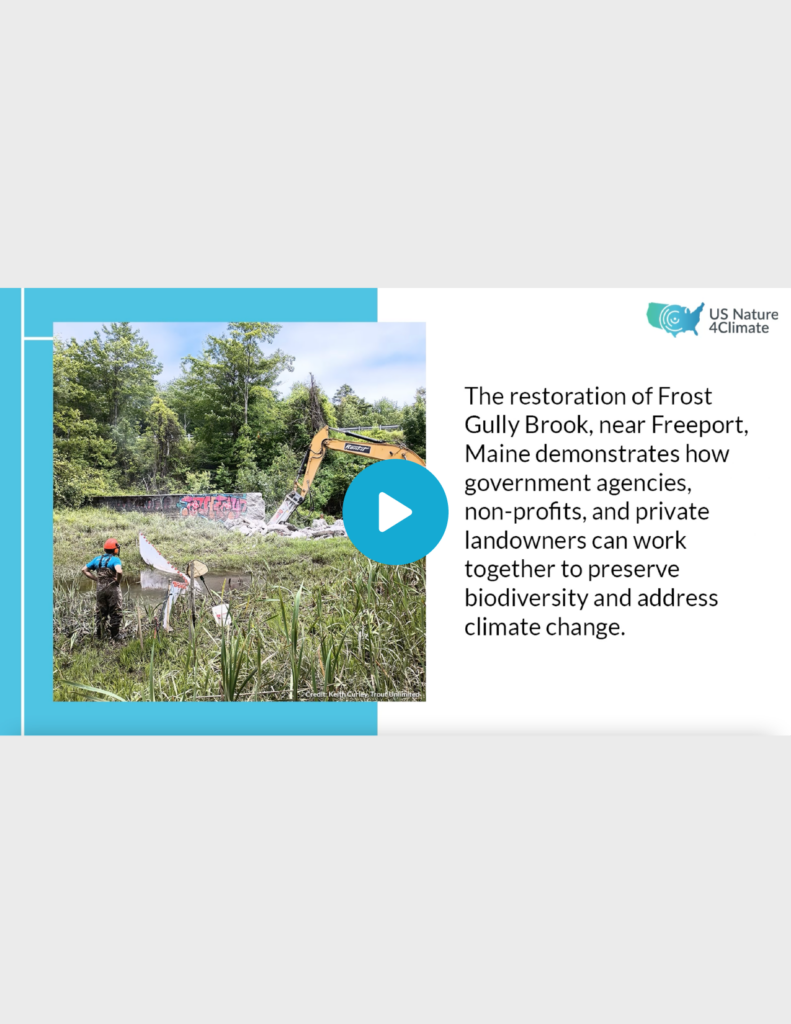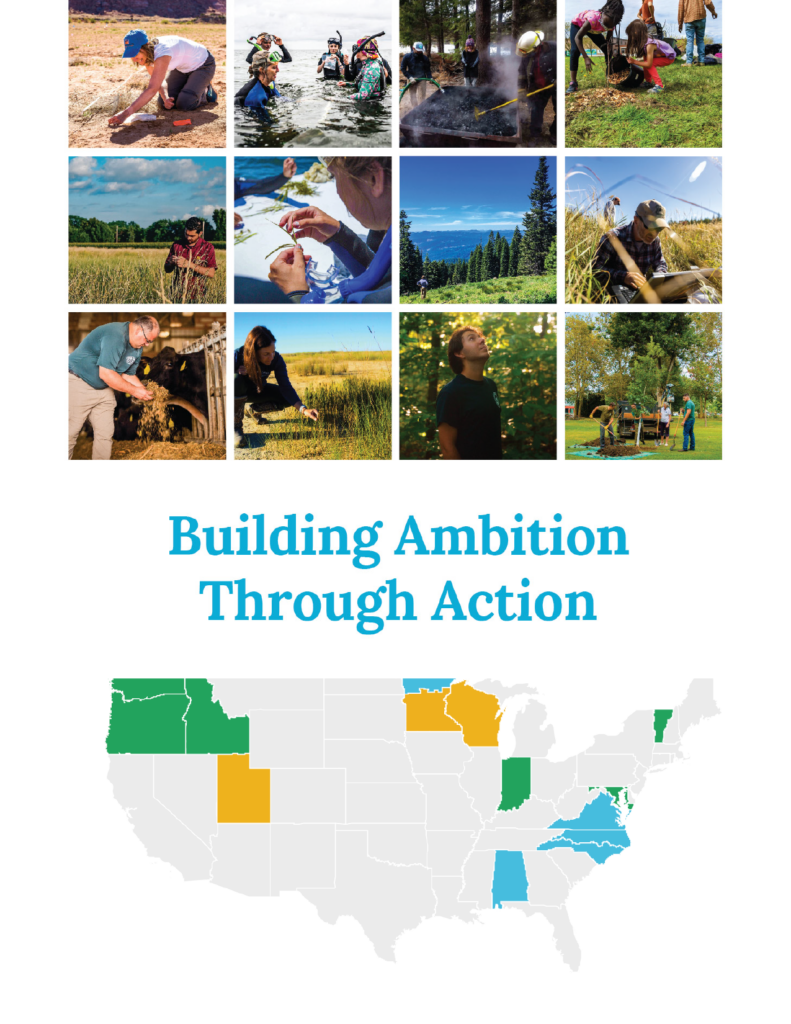Last updated on January 25th, 2024

Estuaries, the coastal intersection of rivers and the sea, are some of the most diverse and economically important ecosystems on planet earth. According to a 2021 Report, The Economic Value of America’s Estuaries, more than 40% of Americans live in estuary regions and roughly 47% of the U.S. GDP comes from our coasts. Additionally, almost 70% of America’s seafood harvest spend some or all their lives in estuaries – including salmon, blue crabs, and oysters.
One of the key programs in place to protect and restore estuaries is the U.S. Fish and Wildlife Service Coastal Program, a voluntary program that has built its legacy on supporting partnerships in coastal communities for the better part of four decades – working alongside private landowners, non-profits, and various government agencies to restore and protect coasts. Restore America’s Estuaries (RAE), a national alliance of coastal restoration organizations, has been a longstanding partner of the Program, working together with the Service and our various partners to support the mission of the Service and to improve the health and resilience of estuaries, particularly in a changing climate.
An important facet of a healthy estuary is connectivity between rivers and the sea. One such project opened miles of free-flowing river upstream from the Casco Bay estuary near Freeport, Maine.

With support from the USFWS Casco Bay Coastal Program, Trout Unlimited (TU), Freeport Conservation Trust, and other local groups completed a project which opened miles of habitat for migratory fish on Frost Gully Brook, a tributary of the Harraseeket River and Casco Bay. The groups removed three defunct dams in the Summer of 2023, and will now embark on a comprehensive stream restoration effort, including work to replant native trees and plants along the stream’s banks.
In addition to blocking fish passage, dams like those in Frost Gully Brook also raise temperatures in streams by pooling water, block the free flow of nutrient rich sediments to flood plains and downstream estuaries, and create increased flood risks to downstream communities.
The native plant and riparian buffer restoration on Frost Gully Brook will also provide shade to the stream during the summer months, protect from unnatural erosion of stream banks, and provide habitat for brook trout and other species. These trees and plants also help mitigate climate change by naturally removing and sequestering carbon from the atmosphere. Indeed, according to the Reforestation Hub, reforesting streamside buffers has the potential to sequester 10 million tons of carbon dioxide a year nationwide.
Restoring For the Future
The source and much of Frost Gully Brook is cold water spring influenced, which keeps water temperatures at safe levels for native brook trout; typically, less than 65 degrees Fahrenheit year-round. The newly accessible sections of river will allow these fish to migrate to traditional spawning areas as well as access cooler waters in the warm summer months. According to Keith Curley, Vice President of Eastern Conservation at Trout Unlimited, “the water temperatures on Frost Gully Brook in the hottest part of July were no higher than 66 degrees in the headwaters but warmed up to 74 degrees behind a dam downstream. Removing these dams will help to keep water temperatures within the tolerance range of brook trout.”
“Given the naturally low water temperatures, Frost Gully Brook is already resilient to warming air temperatures as climate change increasingly threatens our nation’s cold-water fisheries. This made it the perfect site for dam removal and restoration”, said Mark Taylor, Eastern Communications Director at TU.
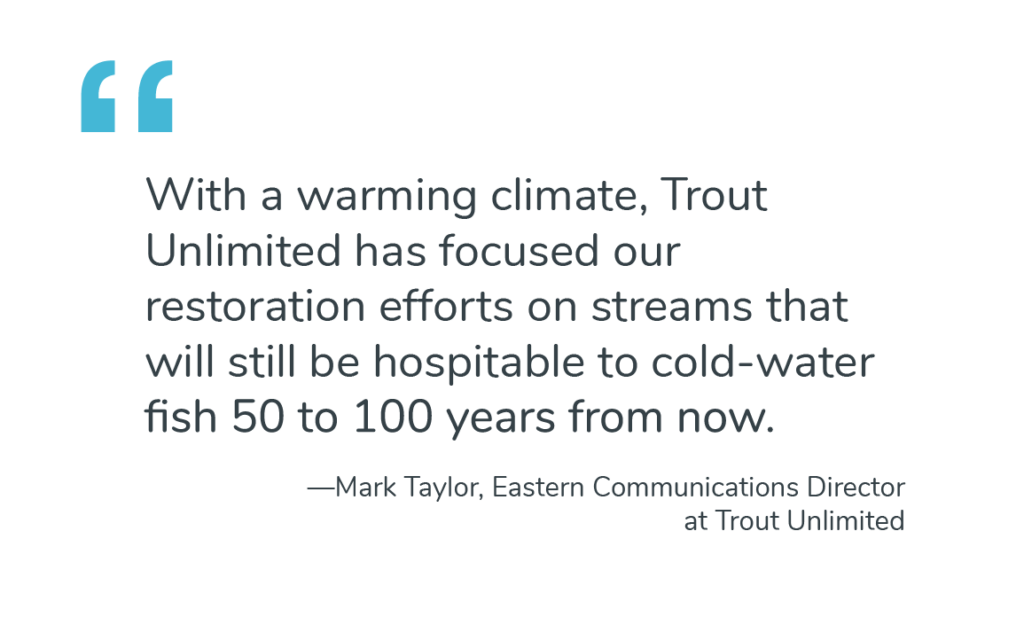
The reconnected stream also presents anglers with new opportunities. Aside from the resident brook trout, Frost Gully Brook is also home to a subpopulation of salter brook trout. The Salters, although genetically identical to resident fish, travel freely between fresh and saltwater and tend to grow much larger than resident brookies. Sea-run brook trout are unique to New England and Canada where cold-water streams flow directly into the ocean rather than traversing through warmer coastal plains, such as those in the Mid-Atlantic and Southeast United States.
“Brook trout need clean, cold water to survive, so they can tell you a lot about the health of a watershed. If brook trout are doing well, then it’s a safe bet that other fish and wildlife are doing well too” said Mr. Curley, again. “This is especially important along the coast, where development can harm water quality and watershed health. If we can keep strong populations of brook trout in coastal streams, we will know we’re taking good care of our watersheds.”
Fishing and the Economy
Maine is a well-known destination fishery with a long-standing tradition and allure that attracts anglers from all over the world. In addition to salter brook trout, the state is home to some of the last remaining populations of wild landlocked and anadromous Atlantic Salmon in the United States. According to the American Sportfishing Association, more than 281,000 anglers spent upwards of $191 million fishing in Maine in 2021.
Outdoor recreation accounted for just under 4% of Maine’s total gross domestic product (GDP), putting it in the top five states in the U.S. in value of outdoor recreation added to state GDP, according to the Maine Office of Outdoor Recreation. The state is also home to one of the largest outdoor retailers in the world, L.L. Bean, whose Freeport headquarters sit just a few miles from the Frost Gully Brook dam removal sites.
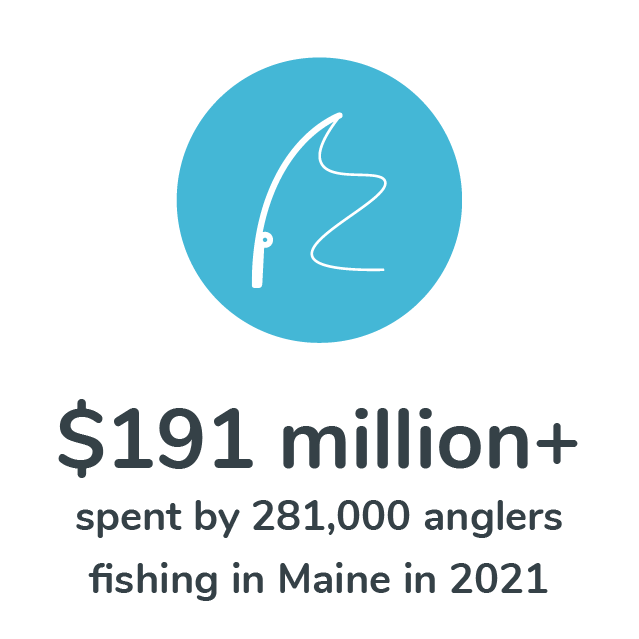
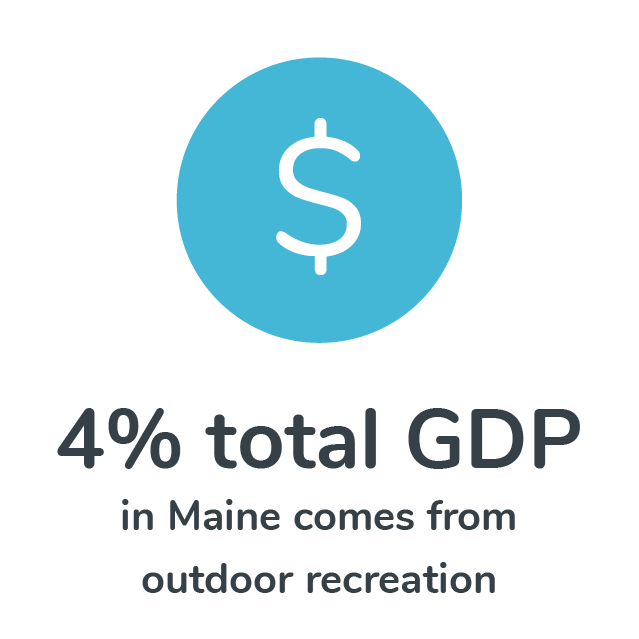
Improvements such as dam removal and stream restoration help support this robust economic driver by offering more and more diverse opportunities for anglers, hikers, and other recreation enthusiasts to enjoy. When they come to town, fishermen and women pay for guides, equipment, lodging, food, and fuel, as well as secondary and tertiary tourism related businesses (think housecleaning, insurance, construction). In rural communities, fishing and other outdoor activities can often stand up the entire local economy. Protecting and restoring streams and estuaries, and the fish they support, has much larger ramifications for the broader region.

Building Conservation Partnerships
Partnerships like this between the Coastal Program, non-profits, state and municipal governments, and private partners are quintessential for achieving climate goals and protecting climate susceptible species, like brook trout.
Since its founding in 1985, the Program has engaged more than 8,200 conservation partners to complete roughly 5,000 conservation projects, improved 600,000+ acres, and protected another 2.3 million acres of priority habitat, while supporting the down-listing of at least 15 endangered and threatened species. In 2022 alone, the program leveraged its investment to secure an astounding 9:1 match from partner funding sources.
“Building partnerships also builds consistency which can translate to more funding, less disruption, and creates stronger long-term relationships” said Samaya Rubio, Community Engagement Associate with RAE. “The Coastal Program is more than just a funding source, they’re a convener, bringing together diverse partners to achieve common goals.”
Despite its long track record of success and increased demand, the Coastal Program has been consistently underfunded and understaffed since its inception. Annual appropriations for this critical program have hardly increased since at least 2014.
Beyond supporting fish passage improvements in Maine, the Coastal Program works diligently in 24 priority estuaries across the country to secure shorelines using nature-based processes, restore marsh and wetland habitats to sequester carbon and protect communities from storms and flooding, and engages private landowners, such as farmers and developers, in best practices to maintain healthy coastal ecosystems while also improving economic opportunities.
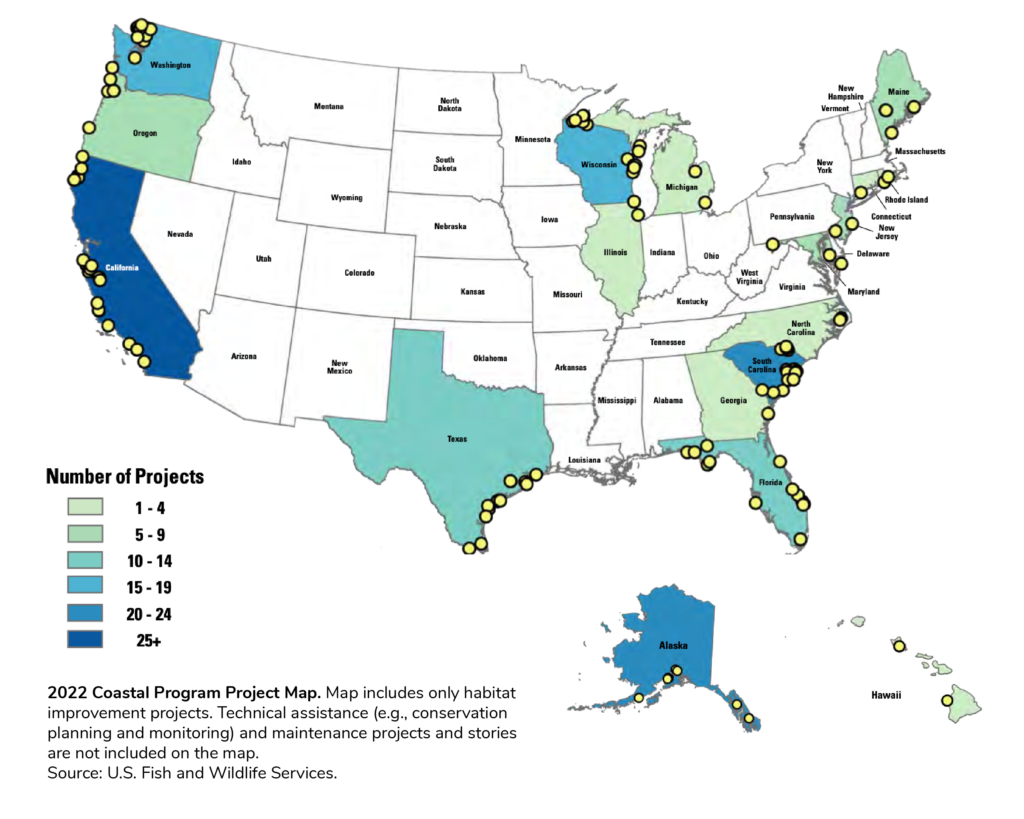
Program staff also provide expertise, resources, equipment, historical knowledge, and create an invaluable network of local restoration and conservation professionals. These partner building efforts also help reduce redundancy and streamline restoration.
Increased funding for the Coastal Program, along with the already established $175 million in funding from the Bipartisan Infrastructure Law through NOAA to remove fish passage barriers (part of a larger allocation $2 billion in funding for ecosystem restoration that supports fish passage), can go a long way in securing the health and viability of our favorite game fish – creating opportunities for more people to enjoy outdoor pursuits as well as providing for local economies.
Without adequate funding, though, the Program is unable to maintain these relationships and thus critical projects are left in limbo due to either lack of resources or expertise, and oftentimes both. Legislation is currently moving through both Chambers of Congress (H.R. 2950 and S.1381) that would strengthen the coastal program’s financial footing and, for the first time since its founding, provide Congressional authorization.
If passed, the strength and success of the Program can grow exponentially, providing another tool to reach our climate and coastal resilience goals, and providing countless recreational opportunities for anglers not just in Maine but throughout the United States.
Rob Shane is the Senior Manager of Communications for Restore America’s Estuaries (RAE) based in Washington, DC. He is an avid angler who can often be found searching for native brook trout in the Blue Ridge Mountains.
Additional Resources
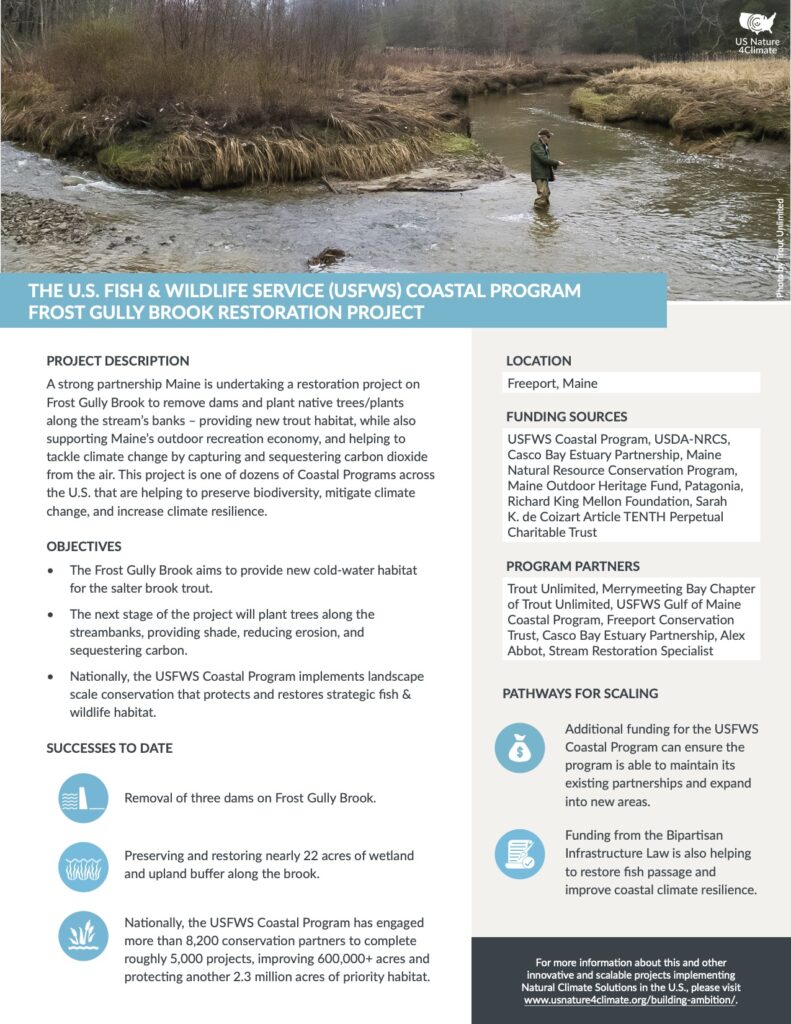
Download project fact sheet
(Includes pathways for scaling)

